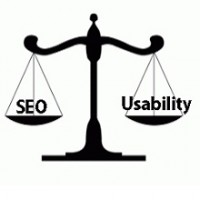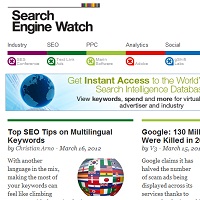In today’s digital age, building a visually stunning website is only half the job. The other half? Making sure it ranks on Google. As a web designer, understanding the fundamentals of SEO (Search Engine Optimization) can set you apart from the crowd. It’s no longer enough to just create pretty pages — your designs must also be discoverable.
Let’s explore how SEO and web design go hand in hand, and how you can integrate smart SEO strategies to ensure the websites you build rank higher and perform better.
Why SEO Matters for Web Designers
Search engines like Google consider hundreds of ranking factors when evaluating websites. While much of SEO is technical or content-based, many critical elements begin with the design and structure of a site.
When you blend good design with SEO best practices, you:
- Improve user experience (UX)
- Increase organic traffic
- Lower bounce rates
- Enhance mobile responsiveness
- Create faster-loading, more accessible websites
In short, SEO-friendly design isn’t just about pleasing algorithms — it’s about creating user-centric websites that deliver results.

1. Build with SEO-Ready Structure
A well-organized site architecture helps search engines crawl and index your pages efficiently. Follow a logical hierarchy when creating navigation menus and internal links.
Best Practices:
- Use semantic HTML (e.g.,
<header>,<main>,<footer>) - Organize pages with a clear parent-child relationship
- Ensure important pages are no more than 2-3 clicks from the homepage
2. Design for Mobile First
Google prioritizes mobile-friendly websites in its ranking algorithm. With the majority of traffic coming from smartphones, mobile-first design is non-negotiable.
Quick Tips:
- Use responsive layouts with flexible grids and images
- Avoid elements that don’t work on mobile (like hover-only menus)
- Keep buttons and text large enough for tap and readability
3. Optimize Site Speed
Website speed is a confirmed ranking factor. Slow-loading pages lead to poor UX and higher bounce rates — a red flag for search engines.
How to Improve Speed:
- Compress images (use formats like WebP)
- Minimize CSS, JavaScript, and HTML
- Enable browser caching and lazy loading
- Use lightweight fonts and themes
Tools like Google PageSpeed Insights or GTmetrix can help you identify speed issues.
4. Master On-Page SEO Elements
Designers often handle the layout of pages, which includes heading structure, image use, and content formatting — all important to on-page SEO.
Key Areas to Focus On:
- Use H1 for the main title and H2-H6 for subheadings in order
- Add alt text to all images (improves accessibility and image SEO)
- Structure content for readability: bullet points, spacing, and short paragraphs
- Ensure titles and meta descriptions fit properly in the design (60–70 characters for titles)
5. Internal Linking & Navigation
Smart navigation improves crawlability and keeps users engaged. As a designer, you can ensure that links are accessible, visible, and strategically placed.
Pro Tips:
- Use breadcrumbs for better navigation
- Link related blog posts or services
- Avoid broken links and update URLs after redesigns
6. Avoid SEO Pitfalls in Design
Some design choices may look appealing but hurt SEO. Be aware of these common mistakes:
Flash-based elements (not crawlable)
Overuse of animations or popups
Text embedded in images instead of HTML
Using JavaScript to load key content without fallback
Always aim to balance creativity with functionality.
7. Collaborate with SEO Experts
SEO isn’t just a checklist — it’s a strategy. If you’re a designer working with clients or teams, loop in an SEO expert early in the design phase. Together, you can align visuals with SEO goals to achieve better performance.
? Tools for Designers to Boost SEO
- Yoast SEO (for WordPress sites)
- Google Search Console
- Screaming Frog (SEO spider tool)
- Figma SEO plugins (for checking alt tags and meta layout)
- Lighthouse Chrome Extension (for site performance audits)
Final Thoughts
SEO is no longer optional for web designers — it’s essential. A beautifully designed website that no one can find is a missed opportunity. By learning how to design with SEO in mind, you don’t just deliver attractive websites — you deliver websites that work.
Whether you’re freelancing, working with an agency, or running your own design studio, mastering the fusion of SEO and web design will make you more valuable in 2025 and beyond.







